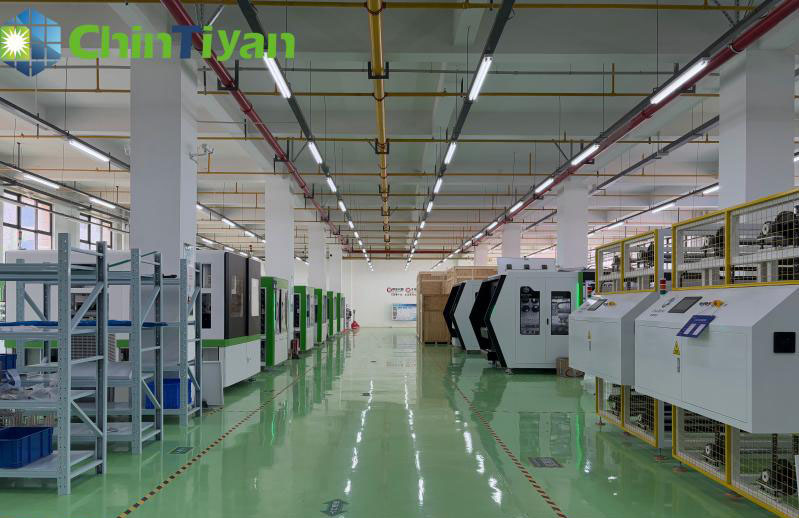Solar photovoltaic module production line workshop environment requirements are strict, from cleanliness, temperature and humidity, electrostatic protection, airflow organization, lighting and ventilation, material selection, environmental protection and safety and other multi-dimensional control, in order to protect module performance and production efficiency. Here are the specific requirements:
I. Cleanliness requirements

1. Air cleanliness level: According to different aspects of PV module production, the air cleanliness level of workshop is different. For example, common module production workshop requires air cleanliness to reach 100,000 level, i.e. the concentration of dust in the air (0.5μm particle size) does not exceed 100,000/cubic meter; while critical links such as the battery production workshop require higher air cleanliness level, which may reach 1,000 or 10,000 level.
2. Clean area division: According to the process flow, reasonably divide the clean area, buffer area, auxiliary area and other areas to reduce cross-pollution and improve production efficiency.
3. Personnel and material management: Employees entering and leaving the workshop need to wear dust-free clothing, masks and gloves, and air shower treatment to remove dust particles from the body. Materials need to be cleaned before entering the workshop to ensure that no external sources of pollution are brought in.
II. Humidity requirements
1. Temperature control: workshop temperature is generally controlled at 20 ℃ -26 ℃, precision processes (such as lithography, thin film deposition) need to be controlled at 22 ℃ ± 0.5 ℃, or even ± 0.1 ℃ in order to avoid thermal expansion and contraction of the wafer resulting in the set of engraving errors.
2. Humidity control: workshop humidity is usually set at 40%-60% RH, semiconductor manufacturing process needs to be accurate to 50% ± 3% RH, in order to inhibit the generation of static electricity and prevent water molecules and photoresist chemical reaction.
3. Fluctuation rate limitation: temperature and humidity change rate should be ≤ 5% / h, to avoid sudden changes in the environment triggered by material deformation or process defects.
III. Anti-static requirements
1. Static electricity eliminator: configure static electricity eliminator to prevent static electricity damage to photovoltaic electronic components.
2. Grounding system: establish a perfect grounding system to ensure that equipment, workstations and personnel are well grounded to prevent the accumulation of static electricity.
3. Anti-static materials: the use of anti-static floor, anti-static workbench and other anti-static materials in the workshop to reduce static electricity.
IV. Air flow organization safety
1. Unidirectional flow or turbulent flow design: Adopt scientific and reasonable airflow organization, such as unidirectional flow or turbulent flow clean room design, to ensure uniform distribution of air cleanliness, and effectively exclude particles and pollutants.
2. Air supply and air exchange: according to the workshop cleanliness level and area size, determine the appropriate air supply and air exchange.
V. Lighting and ventilation requirements
1. Lighting system: adopt energy efficient LED lighting system to meet the production demand and reduce energy consumption. Lighting brightness needs to be adjusted according to the specific needs of the workshop to ensure that the operating area is sufficient light.
2. Ventilation system: Ensure air circulation in the workshop to reduce the accumulation of dust, and at the same time discharge harmful gases to maintain a good working environment. Ventilation system needs to be designed in conjunction with the air conditioning system to ensure that the temperature and humidity control effect.
VI. Material selection and surface treatment requirements
1. Material selection: Selection is not easy to produce particles, corrosion resistance, easy to clean materials, such as stainless steel, aluminum alloy. Ground materials should be selected wear-resistant, non-slip, easy-to-clean materials, such as epoxy flooring or PVC flooring. Wall materials should be dustproof, anti-static, corrosion-resistant properties, can choose anti-bacteria paint or stainless steel plate.
2. Surface treatment: the choice of materials for the necessary surface treatment, such as polishing, spraying anti-static coating, in order to reduce dust adhesion and static electricity.
VII. Environmental protection and safety requirements
1. Waste gas and waste water treatment: the workshop should be equipped with a perfect waste gas and waste water treatment system to ensure that the waste gas and waste water emissions comply with national and local environmental standards.
2. Safety protection measures: establish a perfect safety protection system, including fire-fighting facilities, emergency lighting, safety exits, etc., to ensure the personal safety of employees.
3. Environmental monitoring system: install particle counters, temperature and humidity sensors.
